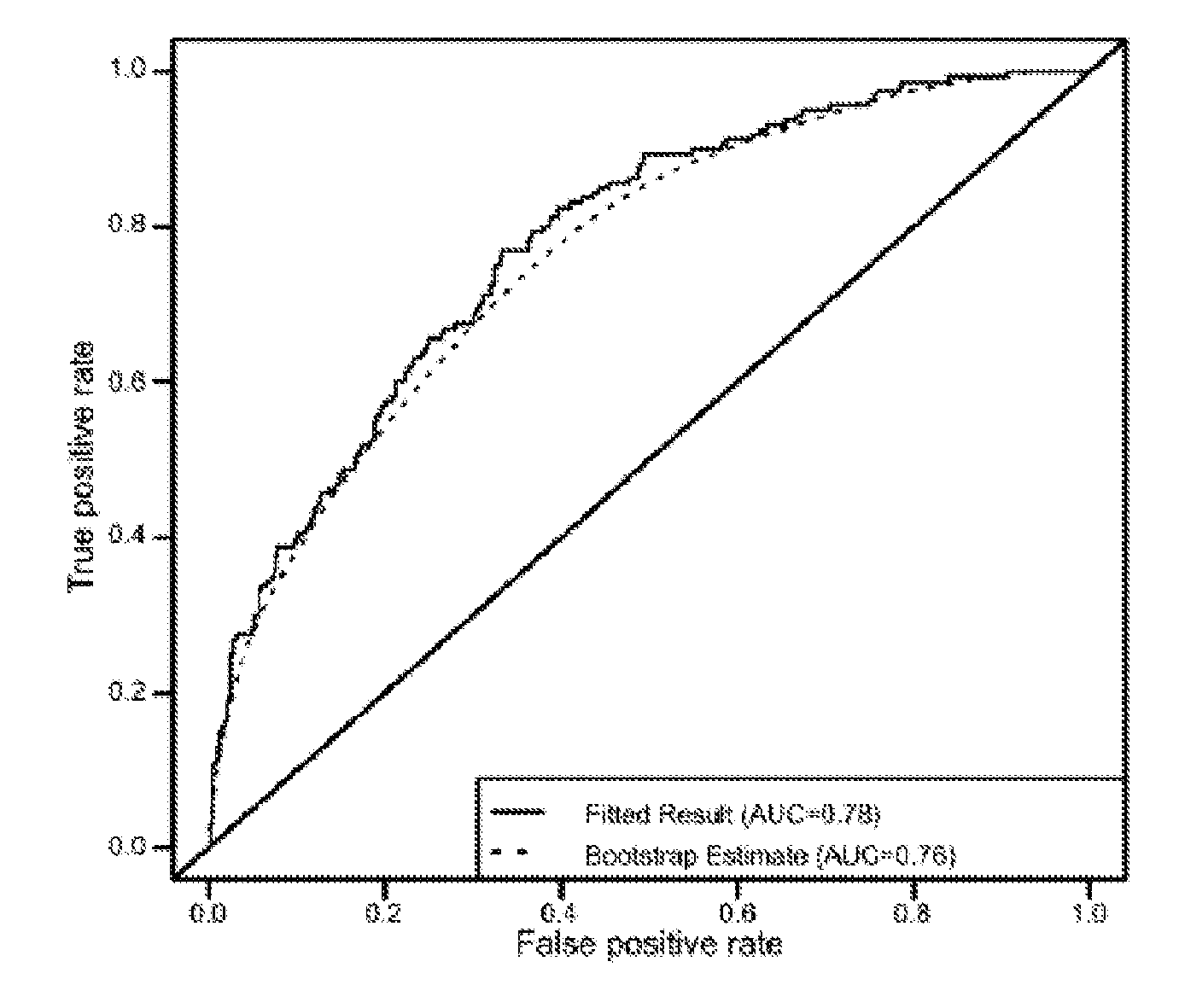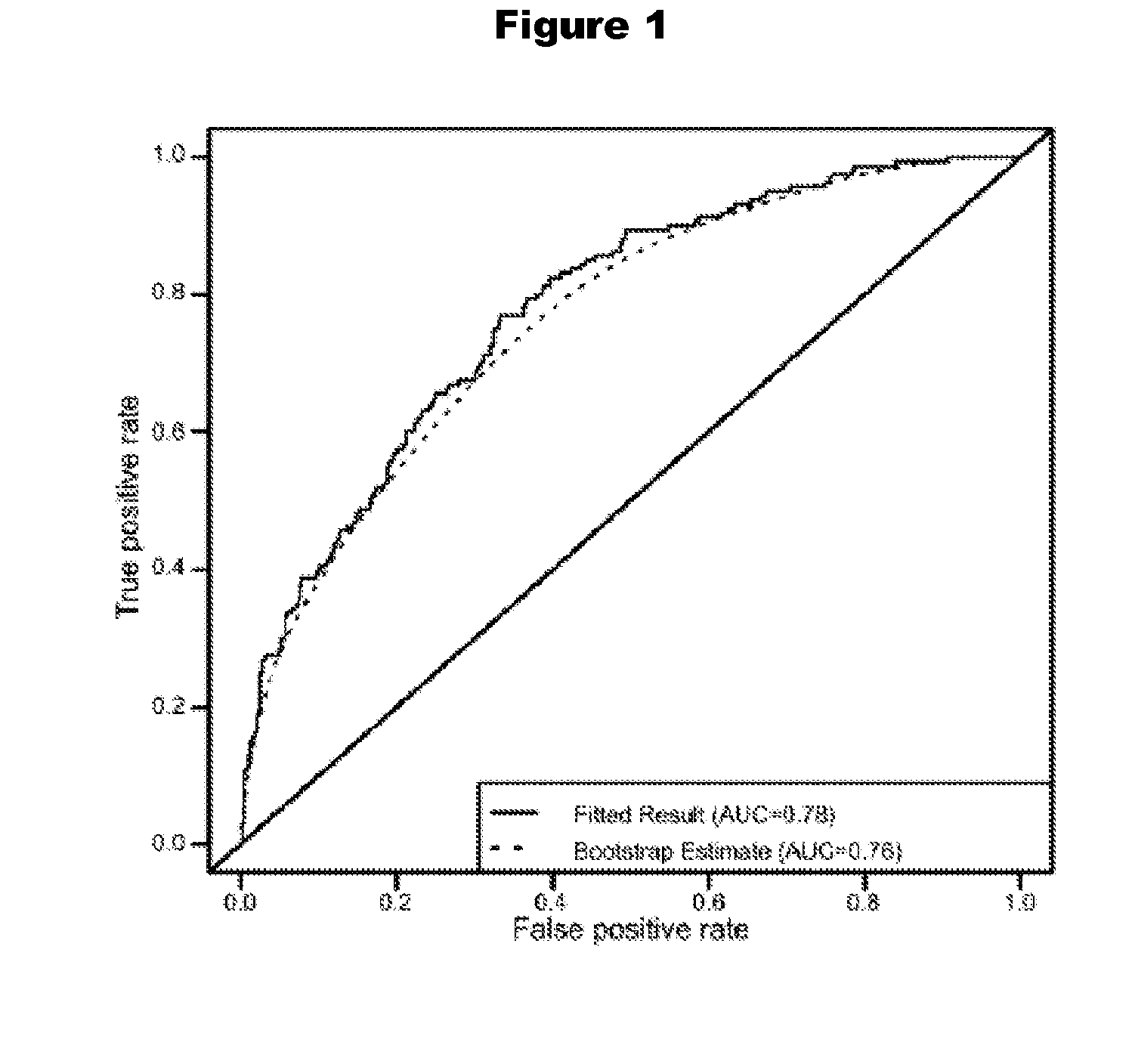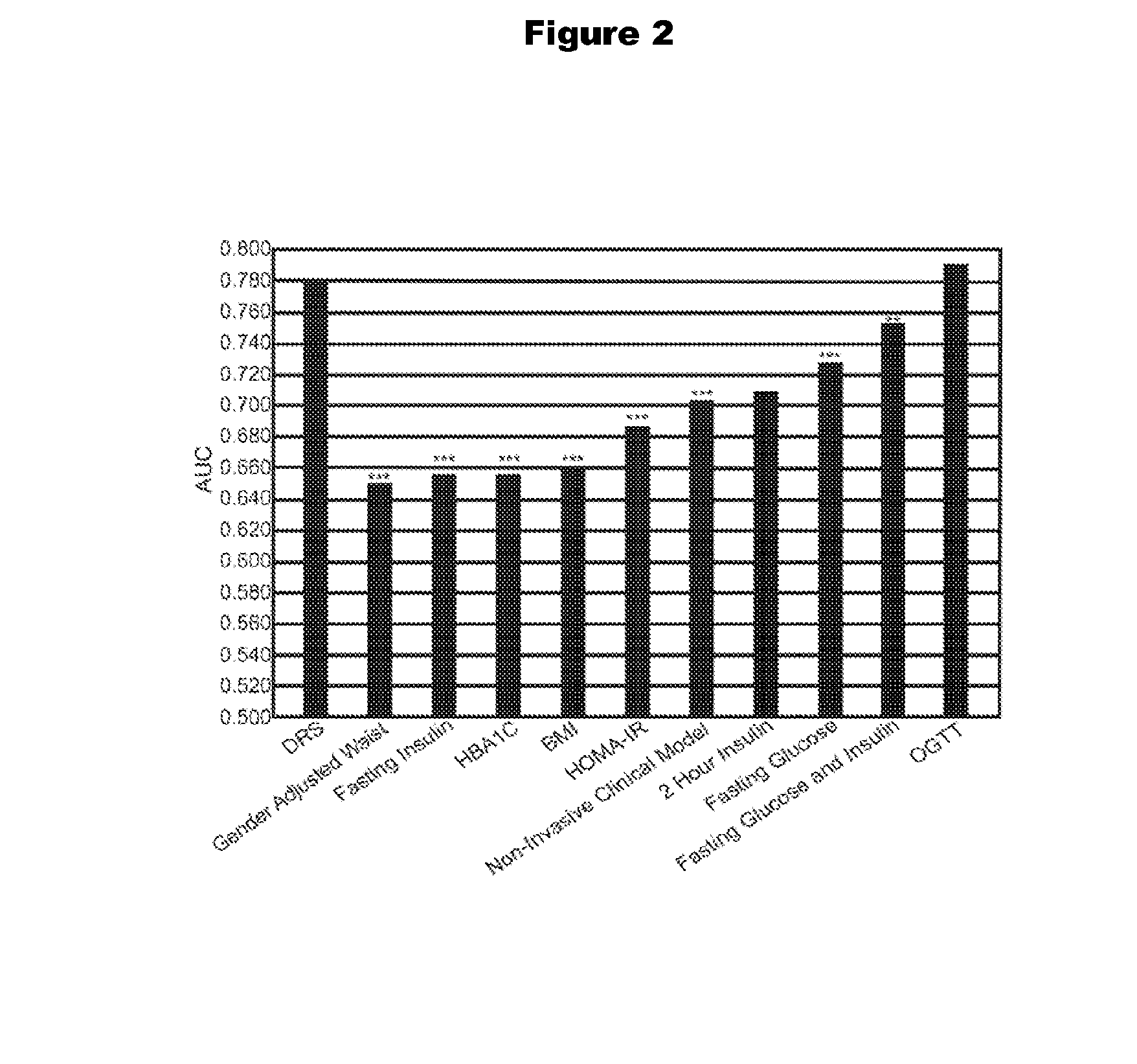Protein and lipid biomarkers providing consistent improvement to the prediction of type 2 diabetes
a biomarker and type 2 diabetes technology, applied in the field of biomarkers associated with diabetes, can solve the problems of delay and possibly even prevent the development of diabetes and its related complications, and single factors cannot be reliably used to accurately assess the propensity of individuals, so as to monitor the health of individuals
- Summary
- Abstract
- Description
- Claims
- Application Information
AI Technical Summary
Benefits of technology
Problems solved by technology
Method used
Image
Examples
example 1
[0289]This is an description of calculating Risk using the algorithm LDA and the formula set out as (DRS=exp(D) / [1+exp (D)]) in order to select some of the preferred protein biomarkers of Table 1.
[0290]An exemplary data set collected from human subjects included 632 observations in this data set and 65 potential blood-borne biomarkers (Inputs). To reduce the number of Inputs, three broad marker selection algorithms were used: Univariate marker selection, exhaustive small model searches, and bootstrap replicates of common heuristic marker selection techniques. The bootstrap marker selection process included forward, backward, and stepwise selection based on Akaike's information criteria (AIC) and Hoetelling's T2, Analysis of variance based filters, random forest filters and Eigengene-based linear discriminant analysis. These selection techniques were used on 100 bootstrap replicates and the marker counts were tabulated and averaged. To control for model size, marker c...
example 2
Validated Lipid Assays
[0324]Biological Samples were prepared via a simple internal standard spike and protein precipitation as follows. The internal standard mix (3 odd chain analogs: CE 15:1, CE 17:0, LY 17:0) was added to 20 μL serum sample. The sample was then vortexed for at least 3 seconds. To precipitate the proteins, 1 mL of 50 / 50 MeOH / CHCl3 was added to the sample followed by vortexing for at least 3 seconds. The samples were then centrifuged for 10 minutes at 17000×G. Subsequently, the supernatant was transferred to a 2 mL glass vial and loaded into the autosampler of the Waters ACQUITY HPLC system. The autosampler was maintained at 10° C. The samples were injected (2 uL per sample) onto a Waters HPLC BEH C18 column (2.1×30 mm, 1.7 um) with a Waters Vangaurd BEH C18 precolumn (2.1×5 mm, 1.7 um). The column compartment was heated to 80° C. Solvent A was 5 mM NH4HCO2 in water. Solvent B was 5 mM NH4HCO2 in MeOH. From 0-1 min, the column was maintained at 80% solvent B, then r...
PUM
| Property | Measurement | Unit |
|---|---|---|
| Volume | aaaaa | aaaaa |
| Fraction | aaaaa | aaaaa |
| Fraction | aaaaa | aaaaa |
Abstract
Description
Claims
Application Information
 Login to View More
Login to View More - R&D
- Intellectual Property
- Life Sciences
- Materials
- Tech Scout
- Unparalleled Data Quality
- Higher Quality Content
- 60% Fewer Hallucinations
Browse by: Latest US Patents, China's latest patents, Technical Efficacy Thesaurus, Application Domain, Technology Topic, Popular Technical Reports.
© 2025 PatSnap. All rights reserved.Legal|Privacy policy|Modern Slavery Act Transparency Statement|Sitemap|About US| Contact US: help@patsnap.com



